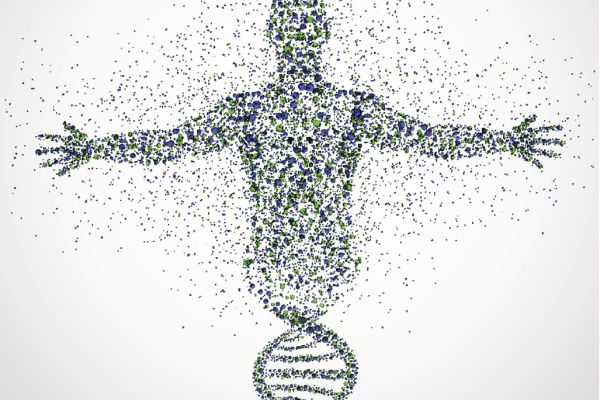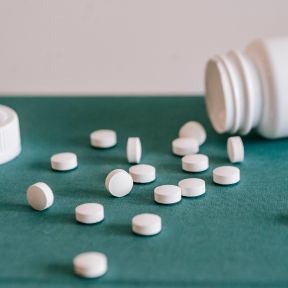What Is Addiction?
A person with an addiction uses a substance, or engages in a behavior, for which the rewarding effects provide a compelling incentive to repeat the activity, despite detrimental consequences. Addiction may involve the use of substances such as alcohol, inhalants, opioids, cocaine, and nicotine, or behaviors such as gambling.
There is evidence that addictive behaviors share key neurobiological features: They intensely involve brain pathways of reward and reinforcement, which involve the neurotransmitter dopamine. And, in keeping with other highly motivated states, they lead to the pruning of synapses in the prefrontal cortex, home of the brain's highest functions, so that attention is highly focused on cues related to the target substance or activity. It is important to know that such brain changes are reversible after the substance use or behavior is discontinued.
Both substance use disorders and gambling behaviors have an increased likelihood of being accompanied by mental health conditions such as depression and anxiety, or other pre-existing problems. Substance use and gambling disorders not only engage the same brain mechanisms, they respond to many of the same treatment approaches.
Substance use and gambling disorders are complex conditions that affect the reward, reinforcement, motivation, and memory systems of the brain. They are characterized by impaired control over usage; social impairment, involving the disruption of everyday activities and relationships; and craving. Continuing use is typically harmful to relationships as well as to obligations at work or school.
Another distinguishing feature of addictions is that individuals continue to pursue the activity despite the physical or psychological harm it incurs, even if it the harm is exacerbated by repeated use. Typically, one's tolerance to a substance increases as the body adapts to its presence.
Because addiction affects the brain’s executive functions, centered in the prefrontal cortex, individuals who develop an addiction may not be aware that their behavior is causing problems for themselves and others. Over time, pursuit of the pleasurable effects of the substance or behavior may dominate an individual’s activities.
All addictions have the capacity to induce a sense of hopelessness and feelings of failure, as well as shame and guilt, but research documents that recovery is the rule rather than the exception. There are many routes to recovery. Individuals can achieve improved physical, psychological, and social functioning on their own—so-called natural recovery. Others benefit from the support of community or peer-based networks. And still others opt for clinical-based recovery through the services of credentialed professionals.
The road to recovery is seldom straight: Relapse, or recurrence of substance use, is common—but definitely not the end of the road. For those who achieve remission of an addiction disorder for five years, researchers report, the likelihood of relapse is no greater than that among the general population. Neuroscientists report that synaptic density is gradually restored.

The processes that give rise to addictive behavior resist a simplistic explanation. There is not just one cause: Although genetic or other biological factors can contribute to a person’s vulnerability to the condition, many social, psychological, and environmental factors also have a powerful influence on substance use.
Some characteristics, such as a lack of ability to tolerate distress or other strong feelings, have been associated with addiction, but there is no one “addictive personality” type that clearly predicts whether a person will face problems with addiction.

Recurrent use of a substance, or engagement with an activity, that leads to impairment or distress, is the core of addictive disorders. The clinical diagnosis of an addiction is based on the presence of at least two of a number of features:
- The substance or activity is used in larger amounts or for a longer period of time than was intended.
- There is a desire to cut down on use or unsuccessful efforts to do so.
- Pursuit of the substance or activity, or recovery from its use, consumes a significant amount of time.
- There is a craving or strong desire to use the substance or engage in the activity.
- Use of the substance or activity disrupts obligations at work, school, or home.
- Use of the substance or activity continues despite the social or interpersonal problems it causes.
- Participation in important social, work, or recreational activities drops or stops.
- Use occurs in situations where it is physically risky.
- Use continues despite knowing it is causing or exacerbating physical or psychological problems.
- Tolerance occurs, indicated either by need for markedly increased amounts of the substance to achieve the desired effect or markedly diminished effect of the same amount of substance.
- Withdrawal occurs, manifest either in the presence of physiological withdrawal symptoms or the taking of a related substance to block them.
The severity of the condition is gauged by the number of symptoms present. The presence of two to three symptoms generally indicates a mild condition; four to five symptoms indicate a moderate disorder. When six or more symptoms are present, the condition is considered severe.

Research makes it clear: There is no way to predict who will develop compulsive substance use or gambling behavior.
Addiction is a multi-faceted condition, arising from the confluence of many elements—including, of course, exposure to an addictive agent. It is more accurate to think of risk factors for the development of substance abuse disorders, rather than direct causes. (There are also factors that protect individuals against addiction.)
Biological factors
- Genes. Estimates vary but scientists find that genetic factors contribute about half the risk for developing a substance use disorder. For example, one factor linked to vulnerability is variation in a gene that determines the makeup of brain receptors for the neurotransmitter dopamine. Another factor appears to be the nature of the body’s hormonal response to stress.
- Physiological factors. Variations in liver enzymes that metabolize substances are known to influence one's risk of alcohol use disorder.
- Gender. Males are more likely to develop substance use disorder than females, although the so-called gender gap may be narrowing for alcohol use disorder, and females are more subject to intoxication effects at lower doses of alcohol.
Psychological Factors
- Personality factors. Both impulsivity and sensation seeking have been linked to substance use and gambling disorders. Impulsivity may be particularly related to the risk of relapse.
- Trauma and abuse. Early exposure to significant adverse experience can contribute to the development of substance use disorders by overwhelming an individual's coping ability, perhaps by sensitizing brain pathways of alarm/distress, or by adding to the burden of stress.
- Mental health factors. Conditions such as depression, anxiety, attention deficit disorder, and post-traumatic stress disorder (PTSD) increase the risk of addiction. Difficulties managing strong emotions are also linked to substance use.
Environmental Factors
- Family factors. While strong family relationships have been shown to protect against substance use disorders, several aspects of family functioning or circumstances can contribute to addiction risk. Having a parent or sibling with an addictive disorder raises the risk, as does a lack of parental supervision or support. Poor-quality or troubled parent-child relations and family disruptions such as divorce also add to one's risk, as does sexual, physical, or emotional abuse. Research shows that marriage and taking on child-raising responsibilities mitigate the risk of addiction.
- Accessibility factors. Easy availability of alcohol or other substances in one’s home, at school or work, or in one’s community increases the risk of repeated use.
- Peer group. As profoundly social animals, people are strongly influenced by their peers and, in generally seeking to be liked by them, may adopt many of their behaviors, particularly during adolescence. Positive social relationships, on the other hand, are known to strongly protect against substance use.
- Employment status. Having a job, and developing the skills for employment, exerts pressure for stability and provides financial and psychological rewards that mitigate addiction risk.

Substance use is a treatable condition and complete remission is entirely possible. Recovery, however, is often a long-term process that may involve multiple attempts. Relapse is now regarded as part of the process, and effective treatment regimens address prevention and management of recurrent use.
Since success tends not to occur all at once, any improvements are considered important signs of progress. Increasingly, programs are available to help those who recognize that they have a substance-use problem but are not ready for complete abstinence.
Because addiction affects so many facets of an individual’s functioning—from the ability to tolerate frustration to establishing and maintaining a productive role in society—good treatment focuses on many dimensions of life, including family roles and work skills as well as mental health.
Treatment can include any of a number of components, which are often deployed in combination and are likely to change over the course of recovery:
- Detoxification, conducted under medical supervision, may be needed but is only the first stage of treatment.
- Medications that reduce or counter use of illicit substances are suitable for some individuals, or medications may be used to target co-occurring disorders such as anxiety and depression.
- Motivational Interviewing, which is a short-term counseling process to help a person resolve ambivalence about treatment and find and hold onto incentives for change.
- Cognitive Behavior Therapy (CBT) can help a person recognize and cope with situations that trigger the desire to use substances.
- Group therapy and other peer-support programs leverage the direct experience of many to support individual recovery and prevent the recurrence of substance use.
- Family therapy helps individuals repair any damage done to family relationships and to establish more supportive ones.
- Life skills training, including employability skills, may be part of an individual's treatment plan.
- Good treatment programs also feature the regular monitoring of individual progress.
Treatment is available in a variety of settings, from a doctor’s office or outpatient clinic to long-term residential facility. No one way will be right for everyone, and there is evidence that one's commitment to change is more important than the type of treatment program he or she selects. Whatever the treatment under consideration, say independent researchers, there are number of features to look for to identify an effective program:
- Patients undergo comprehensive medical and psychiatric screening.
- Treatment addresses individual needs, including co-occurring conditions, whether chronic pain, anxiety, or hepatitis.
- Families are involved in treatment.
- There is continuity of care via active linkages to resources in subsequent phases of recovery.
- The facility maintains a respectful environment.
- Treatment services are evidence-based and reflect best practices.
- Staff members are licensed and certified in the disciplines they practice.
- The program is accredited by a nationally recognized monitoring agency.
- Patient response to treatment is monitored and the program or facility offers outcome data reflecting treatment performance.

The medical world currently views substance use disorders according to the class of drug that is used. As a result, it defines 10 distinct disorders. All share the defining features of addiction: They directly and intensely involve reward and reinforcement systems of the brain, stimulating compulsive use that typically leads to the neglect of normal activities and negative consequences. With some variation, they also share common symptoms, although withdrawal symptoms differ significantly among them and do not occur for some classes of drug such as hallucinogens and inhalants.
- Alcohol Use Disorder: Alcohol is a brain depressant and alcohol use disorder is common, although more so among adult men (12.4 percent) than women (4.9 percent), although rates are rising among women. It affects men and women differently; women seem to be more susceptible to some of the detrimental effects of alcohol, researchers find. Most commonly, the disorder develops well before age 40.
- Caffeine Intoxication: The consequence of very high doses of caffeine consumption, caffeine intoxication is marked by symptoms including restlessness, nervousness, insomnia, flushed face, gastrointestinal disturbance, muscle twitching, rambling thoughts and speech, cardiac rhythm disturbances, periods of inexhaustibility, and psychomotor agitation.
- Cannabis Use Disorder: Cannabis use disorder is highest among 18-to29-year-olds (4.8 percent) and prevalence of the disorder decreases with age.
- Phencyclidine and Other Hallucinogen Use Disorder: These substances alter perception. Phencyclidine is commonly called “angel dust” or PCP and produces feelings of separation of mind from body.
- Inhalant Use Disorder: Inhalant substances are volatile hydrocarbons—toxic gases that are released from glues, fuels, paints, and other volatile compounds and have psychoactive effects. The disorder occurs primarily among those ages 12 to 17.
- Opioid Use Disorder: Opioid drugs include the illicit drug heroin and prescription pain-relievers such as oxycodone, codeine, morphine, and fentanyl, among others. According to the American Society of Addiction Medicine, in 2015, 2 million people had a substance use disorder involving prescription pain relievers and 591,000 had a substance use disorder involving heroin. Opioid-related overdoses are now the leading cause of death in Americans under 50 years of age. Prescribed opioids are the “overwhelming initial source” of addiction, according to ASAM.
- Sedative, Hypnotic, or Anxiolytic Use Disorder: Addiction to sleeping pills and anti-anxiety medications falls into this category. Like alcohol, these agents are brain depressants. Rates of the disorder are highest among 18-to-29-year-olds.
- Stimulant Use Disorder: Substances in this group include amphetamines; methylphenidate, best known as the prescription drug Ritalin; and cocaine. Stimulant drugs are commonly prescribed for the treatment of attention-deficit/hyperactivity disorder (ADHD) and narcolepsy. In the U.S., cocaine use is highest among those aged 18 to 25.
- Tobacco Use Disorder: The nicotine in tobacco acts as a central nervous system stimulant. Studies show that 68 percent of adult smokers want to quit, and 50 percent have made attempts to quit.
- Other (or Unknown) Substance Use Disorder: Substances ranging from antihistamines, betel nut, and cortisol to steroids may also have effects on the central nervous system that lead to compulsive use causing serious problems.

Addiction is not limited to biochemical substances such as cocaine, alcohol, inhalants, or nicotine. It can involve behaviors that provide opportunities for immediate reward. Because of the fast feedback that occurs from such activities, they can quickly turn a pastime into a compulsive pursuit of reward that may lead to the neglect of other life goals and create harmful consequences, from the loss of large sums of money to the disruption of important relationships.
Behaviors indicative of gambling disorder include:
- The need to gamble with increasing amounts of money to achieve the desired excitement.
- Restlessness or irritability when attempting to cut down or stop gambling.
- Repeated unsuccessful efforts to cut back or stop gambling.
- Preoccupation with gambling.
- Feelings of emotional distress leading to gambling.
- Gambling losses followed by attempts to make up for them.
- Lying to conceal the extent of one's gambling.
- Gambling that jeopardizes important relationships or work, school, or other obligations.
- Financial desperation leading to borrowing money from others.
In June 2018, the World Health Organization included Gaming Disorder, involving digital gaming or video gaming to such a degree that it takes priority over other interests and daily activities despite negative consequences, in its newest edition of the International Classification of Diseases. This inclusion reflects a consensus of experts from different disciplines and geographical regions around the world. They point out that only a tiny proportion of those who engage in digital or video gaming activities—notably those who have impaired control over the activity and spend excessive amounts of time at it—are at risk for the diagnosis.
In the United States, excessive behavior patterns—involving smartphone use, Internet gambling, gaming, pornography, even eating and shopping—are being studied as possible behavioral addiction. While such activities may provide the opportunity for ample immediate reward, it has not yet been determined that they meet all of the criteria for addictive behavior.














